
Blackwall Yard is a small body of water that used to be a shipyard on the River Thames, engaged in ship building and later ship repairs for over 350 years. The yard closed in 1987.

Blackwall Yard is a small body of water that used to be a shipyard on the River Thames, engaged in ship building and later ship repairs for over 350 years. The yard closed in 1987.
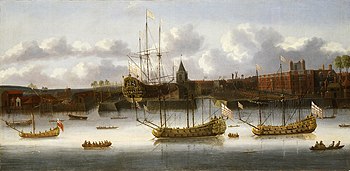
Blackwall was a shipbuilding area since the Middle Ages. In 1607, the Honorable East India Company (HEIC) decided to build its own ships and leased a yard in Deptford. Initially, this change of policy proved profitable as the first ships cost the Company about £10 per ton instead of the £45 per ton that it had been paying to have ships built for it. However, the situation changed as the Deptford yard came to be expensive to run.
In 1614 the East India Company outgrew Deptford and ordered William Burrell to begin work on a new yard for repair, construction and loading of out-going ships. The site Burrell selected was at Blackwall, which was further down river and had deeper water, allowing laden ships to moor closer to the dock. The new yard was fully operational by 1617. The yard and its facilities were enlarged repeatedly during the early 17th Century. The yard was surrounded by a 12-foot (3.7 m) high wall, but was not used for storage of imported goods. [1] Later on in the 17th century the East India Company reverted to its original practice of hiring vessels. In many cases the owners who chartered their vessel to the East India Company had them built at Deptford and Blackwall.

In 1656, following a decline in the East India Company's fortunes, the yard was sold to shipwright Henry Johnson (later Sir Henry), who was already leasing the docks and part of the yard. The premises sold included three docks, two launching slips, two cranes and storehouses. Johnson went on to expand the yard, which continued to build and repair ships for the East India company as well as other activities.
The Anglo-Dutch wars of the late 17th Century resulted in too much work for the royal dockyards, and the Navy Board under Samuel Pepys began to commission third rates from Blackwall which was by then the largest private yard on the Thames. A new dock of 1½ acres constructed in the 1660s was the largest wet dock in England until the construction of the Howland Great Wet Dock in Rotherhithe. Construction of merchant ships continued, with Blackwall building 12 ships between 1670 and 1677 in a period when a bounty was offered to shipbuilders by Charles II. Following Johnson's death in 1683 the yard passed to Henry's son Henry Johnson (junior), who was not a shipwright, but left the management to others, including his brother William Johnson. After William's death in 1718 on a posting as Governor of Cape Coast Castle for the Royal African Company, the yard had little work until sold in 1724 and was overtaken in importance by Bronsdens yard at Deptford. With the end of the Dutch wars naval shipbuilding had also retreated to the royal yards. This was reversed by war with Spain in 1739. [1]
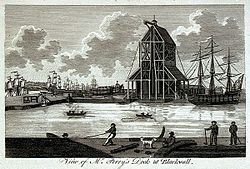
The yard continued to repair and build ships, particularly for the East India Company, throughout the 17th and 18th centuries. The yard recovered under the management and later ownership of the Perry family. When the Navy again surveyed the yard in 1742, the yard had the greatest capacity on the Thames. In 1784 when Francis Holman painted it, it was said to be the biggest private yard in the world. [2] It was at this time that the Perrys began construction of the large Brunswick Dock to the east of the yard, opened in 1790.
The yard was reduced in size in 1803 when the East India Dock company bought the eastern part including the Brunswick Dock. The Brunswick Dock became the East India Export Dock (the southern of two docks), which in the 20th Century was filled to become the site of Brunswick Wharf Power Station. In the 1830s the London and Blackwall Railway isolated the northern part of the remaining site, which the company then sold off.[ citation needed ]
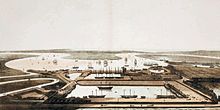
As the Perrys began to withdraw from the business the firm became Perry Sons & Green (George Green having married John Perry's second daughter, Sarah in 1796), Perry Wells & Green (a half share having been sold to Rotherhithe shipbuilder John Wells) and eventually Wigram & Green. In 1821 the firm built its first steamship. During this period the yard built Blackwall Frigates.
In 1834 the paddle-steamer Nile was built for delivery to the Egyptian Navy. William Light captained the ship from London to Alexandria, reaching Alexandria in September. John Hindmarsh, who had prepared the steamer for delivery at Blackwall, travelled as a passenger on the ship on its journey to Egypt, and was made captain of the ship by November. [3] [4] [5]
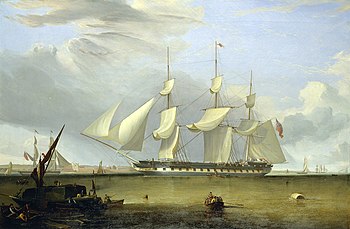
In 1843 the remaining site was split into two yards, with Money Wigram & Sons in the western yard. Wigrams soon began construction of iron ships, but ceased building in 1876. [6] In 1877 Wigram's yard was bought by the Midland Railway and developed as a coal dock, which survived until the 1950s. This was known as Poplar Dock, not to be confused with the North London Railway's Poplar Dock built in 1851 further west, [7] and still in use as a marina. During World War II the dock was seriously damaged by bombing and it was later filled in and used as a fuel oil storage yard by Charringtons. Part of the site is now occupied by the northern ventilation shaft of the second Blackwall Tunnel and the rest by housing.

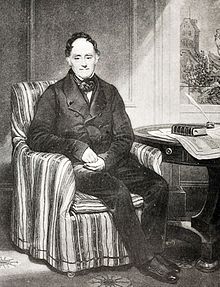
The eastern yard was occupied by R & H Green. Greens demolished earlier buildings in order to extend the dry dock, known as the eastern or lower graving dock. This was progressively lengthened and reduced in width. By 1882 it was 335 ft long (102 m) and 62 ft wide (19 m), with a wooden bottom and brick sides. In 1878 they opened the 'new' or upper graving dock. This was 410 ft long (120 m) [later lengthened to 471 ft (144 m)], 65 ft wide (20 m) at the entrance, and 23 ft deep (7.0 m). Greens continued building wooden ships longer than Wigrams, including 25 naval vessels, 14 of them 200-ton gunboats, during the Crimean War. Their first iron ship was built in 1866.
R. & H. Green Ltd continued to build ships at Blackwall until 1907. In 1910 the company amalgamated with Silley Weir & Company, as R.& H. Green and Silley Weir Ltd, with further premises at the Royal Albert dry docks. The company grew rapidly until the outbreak of the First World War, concentrating on repairing vessels. Throughout the war the firm constructed and repaired munitions ships, minesweepers, hospital ships and destroyers.
After the war a major programme of building and refurbishment was begun at the yard. A marine engineering shop was built between the two graving docks. This was nearly 350 ft long (110 m), over 100 ft wide (30 m) and nearly 60 ft high (18 m), and dominated the yard until the late 1980s. Their head office was located at the YMCA Building in Greengate Street, Plaistow E13, and they remained there, almost at the last occupants, until the company finally moved out in 1981.
In 1977 the company merged with the London Graving Dock Company Ltd (located on the SE of Blackwall Basin in the West India Docks) to form River Thames Shiprepairers Ltd, as a division of the nationalized British Shipbuilders. The Blackwall site became known as Blackwall Engineering and continued in operation until 1987.
The upper graving dock remained in use until closure. In 1989 it was partially filled in and the new Reuters building was constructed, straddling it. The eastern dry dock (one of the earliest remaining on the Thames) was refurbished in 1991–92. [8] [9] [10]
In 2021, plans to redevelop the 1.7ha Blackwall Yard were published, including five buildings ranging from nine to 39-storeys tall, with the former graving dock to become an open-air swimming pool. [11]

The Port of London is that part of the River Thames in England lying between Teddington Lock and the defined boundary with the North Sea and including any associated docks. Once the largest port in the world, it was the United Kingdom's largest port as of 2020. Usage is largely governed by the Port of London Authority ("PLA"), a public trust established in 1908; while mainly responsible for coordination and enforcement of activities it also has some minor operations of its own.

Blackwall is an area of Poplar, in the London Borough of Tower Hamlets, East London. The neighbourhood includes Leamouth and the Coldharbour conservation area.

The Thames Ironworks and Shipbuilding Company, Limited was a shipyard and iron works straddling the mouth of Bow Creek at its confluence with the River Thames, at Leamouth Wharf on the west side and at Canning Town on the east side. Its main activity was shipbuilding, but it also diversified into civil engineering, marine engines, cranes, electrical engineering and motor cars.

John Laird was a British shipbuilder and key figure in the development of the town of Birkenhead. He was the elder brother of Macgregor Laird. He was one of the first to use iron in the construction of ships.

Samuda Brothers was an engineering and ship building firm at Cubitt Town on the Isle of Dogs in London, founded by Jacob and Joseph d'Aguilar Samuda. The site is now occupied by Samuda Estate.

The East India Docks were a group of docks in Blackwall, east London, north-east of the Isle of Dogs. Today only the entrance basin and listed perimeter wall remain visible.

Blackwall frigate was the colloquial name for a type of three-masted full-rigged ship built between the late 1830s and the mid-1870s.

Challenger was a wooden clipper ship built in 1852 by Richard & Henry Green, in their Blackwall Yard for Hugh Hamilton Lindsay, London. She was the 291st ship built by the yard and was a remarkable departure from the previous ships produced. In 1850 the American clipper ship Oriental visited West India Docks, the largest clipper ship to visit London and the Admiralty was given permission to take her lines, and this was done by Messrs Waymouth and Cornish, both Lloyd's Surveyors, in the dry dock at Green's Yard in Blackwell. This is probably the reason that it was said that Challenger's design was inspired by and had a close resemblance to the Oriental's.
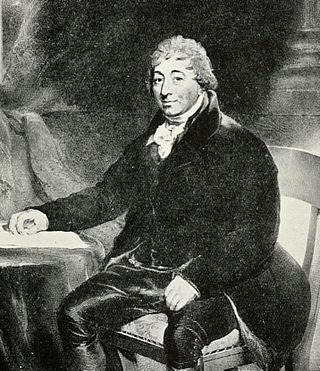
Sir Robert Wigram, 1st Baronet was a British merchant shipbuilder and Tory politician who sat in the House of Commons of Great Britain and of the United Kingdom between 1802 and 1807.

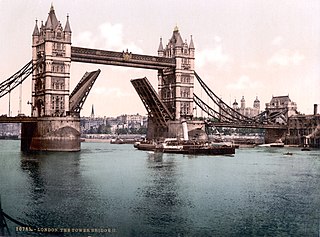
Steamboat services started on the Thames in around 1815 and for nearly 25 years were the main use of steam to carry passengers before the emergence of railways in the south of England. During this time at least 80 steamers are recorded in the Thames and the Steamboat Act of 1819 became the first statute to regulate the safety of the new technology for the public. Wooden boats driven by paddle-wheels, they managed during this time to establish themselves as faster and more reliable than the earlier use of sailing and rowing boats for passenger transport within the Thames estuary.

Richard Green (1803–1863) was an English shipowner and philanthropist.
Westwood, Baillie and Co was a Victorian engineering and shipbuilding company based at London Yard in Cubitt Town, London.

J & W Dudgeon was a Victorian shipbuilding and engineering company based in Cubitt Town, London, founded by John and William Dudgeon.

Coldharbour is a street and wider conservation area of the Blackwall area in Poplar, lying on the north bank of the River Thames, east of Canary Wharf. The area is said to be "[t]he sole remaining fragment of the old hamlet of Blackwall" and "one of the last examples of the narrow streets which once characterised the river's perimeter".

George Green was a ship builder from Blackwall, London.

Six vessels with the name Royal George made voyages for the British East India Company, and so may be referred to as East Indiamen. The company actually owned one, four were on long-term charter, and one was a one-voyage charter. The vessels were named in honour of one or more of the British kings whose name was George.
Sir Henry Johnson was an English shipbuilder and politician who sat in the House of Commons in 1679. He was one of the leading commercial shipbuilders on the River Thames during the period of enormous mercantile expansion and the Dutch wars after the Restoration..
William Barnard (1735–1795) was an 18th century English shipbuilder serving the Royal Navy and the British East India Company (EIC).
This article was first published in hardcopy in Australian Dictionary of Biography, Volume 2, (MUP), 1967
This article was first published in hardcopy in Australian Dictionary of Biography, Volume 1, (MUP), 1966
Nile (paddle steamer), 1834, 2. Built at London. Guns 2x10" shell guns. (dimensions : 190-3 x 32-8,5/54-0 x 21-9, 412 hp.)